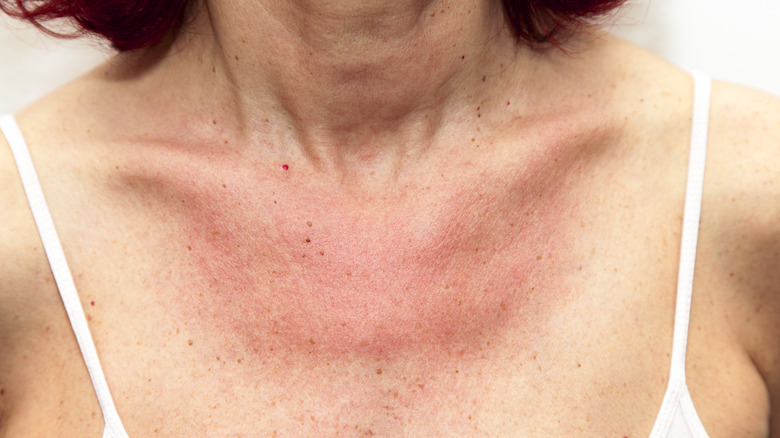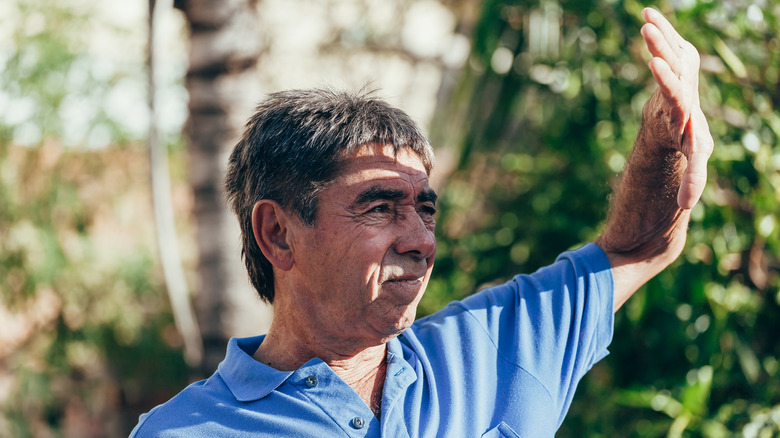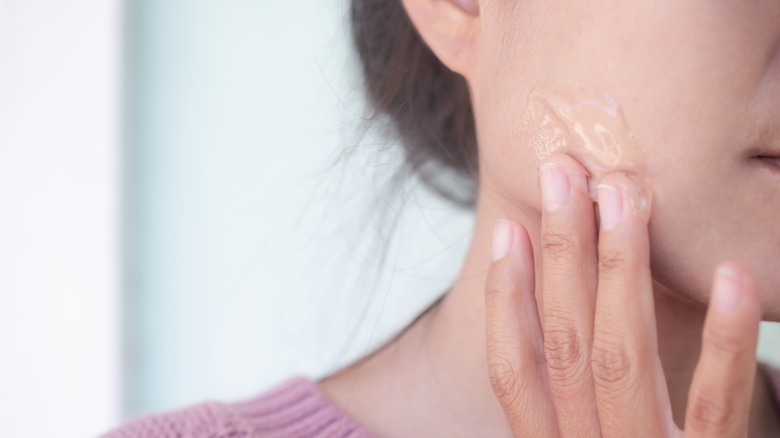What Is A Sun Rash And How Do You Identify It?
Poison oak, certain medications, or even stress can all prompt a skin rash — but have you ever heard of a rash provoked by sunlight? Turns out, the effects of UV rays on our skin aren't solely limited to sunburn (via Mayo Clinic). Otherwise known as polymorphous light eruption, sun rash affects those with photosensitivity. It's particularly likely during the spring and summer months, when tee-shirts and shorts allow for more sunlight to hit our skin.
Those who are prone to sunburn, reside in northern regions, or have a family medical history of sun rash may be more susceptible to this type of immune system reaction. If so, it will likely first emerge during adolescence or young adulthood. Most often, the rash is seen on the chest, neck, or arms. Also referred to as sun allergy or sun poisoning, it's not entirely clear what causes sun rash. However, knowing the symptoms can help you identify potential signs of the condition.
Rash texture and timing
To determine whether or not you may be experiencing sun rash, take a look at the texture of the affected skin. Most often, sun rash appears in the form of rough, elevated patches or collections of small, inflamed bumps. Additionally, those with sun rash may experience itching or burning sensations — as well as fever or chills in rarer instances.
Furthermore, take note of the timing of the rash. Generally speaking, sun rash will develop anywhere from a half-hour to several hours after time spent in the sun. For some people, however, the rash can still develop even if they haven't been outside, such as from exposure to sunlight streaming in through a window. The good news is that sun rash usually takes care of itself within 10 days' time. Even more, outbreaks tend to diminish throughout the summer, although they may return on a yearly basis. For some, sun rash may disappear entirely as time goes on.
Sun rash treatment and prevention
If you're someone who deals with sun rash, there is relief to be found. "Over-the-counter aloe vera or anti-itch ointments can be helpful. Cool compresses or a cool bath can provide itch relief," Melinda Cooling, chief clinician executive for OSF Saint Gabriel Health, told OSF Healthcare. "If you have blisters, keep them clean and dry to help to prevent infection."
Use of antihistamines or over-the-counter (OTC) pain-relief medications can also be beneficial, according to Mayo Clinic experts. To help reduce outbreaks from occurring in the first place, be sure to wear sunscreen with a sun protection factor (SPF) of 30 or more when venturing outside. Remember to lather on more every two hours. Wear clothing that covers the length of your arms and legs, and top off your look with a wide-brimmed hat. If you can, stay indoors from 10 a.m. to 2 p.m. when the sun's UV rays are at their most powerful. For those with severe sun rash symptoms, your doctor may recommend phototherapy treatment to reduce the likelihood of yearly outbreaks.



